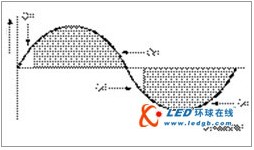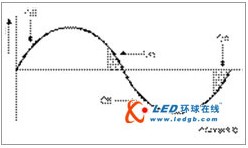In recent years, with the advent of LED luminaires, revolutionary changes have taken place in the field of lighting. In European and American retail stores, ancient incandescent bulbs are hard to trace and even prohibit sales. In the alternative lighting market, low-power compact fluorescent lamps (CFLs) are now facing new competitors. LED technology is constantly improving, and LED luminaires are becoming increasingly powerful in terms of brightness and power. These features, combined with their unique energy efficiency, make LED luminaires ideal for lighting.
Generally, incandescent bulbs produce 10 lumens per watt, while LED manufacturers claim that LED fixtures can reach up to 100 lumens per watt. However, the limitations of form factor and maximum operating temperature make it difficult for LEDs to reach their full potential. The best-performing LED replacement luminaires currently have an efficiency of 50-60 lumens per watt. As a result, LED luminaires are already indistinguishable from CFL luminaires in terms of efficiency standards (Note: CFL lamps have an efficiency range of 60-70 lumens per watt and limited potential for improvement).
Ecological issues are also receiving increasing public attention. As people's awareness of environmental issues such as global warming and climate change continues to increase, the concept of saving resources and energy is becoming the focus of many marketing strategies. The reduction in vehicle fuel consumption and the ban on incandescent lamps over the past 10 years are a good illustration of this trend. Multinational governments around the world have set a timetable for the elimination of incandescent lamps. There are also public policies that provide loose tax support or other financial assistance for energy-efficient “ecological†products.
The inherent advantages of LEDs are in line with the public's eager anticipation for safe, energy efficient and environmentally friendly lighting solutions. LEDs have many other advantages, such as higher dimming capability, longer life and smaller form factor, opening the door to shape, color, longevity and cost.
Replacing traditional lighting sources (fluorescent, CFL, halogen or other incandescent) with LED lighting solutions that are compatible in mechanical, optical, electrical and thermal aspects is an ongoing industrial revolution. The business, office and residential lighting markets call for high quality LED retrofit lamps. Although cost issues remain a major obstacle to these solutions, there are also technical issues to be aware of:
Electrical compatibility with existing infrastructure, especially when using standard in-wall outlet dimmers.
The shape must be in the form of a screw
Must solve the heat dissipation problem of LED
1.1 Dimmer compatibility
Currently, control devices for lighting fixtures in homes, hotels, and offices are designed for incandescent lighting. The best way to provide dimming is to use a "mains phase cut" dimmer. This dimmer was developed in principle for powering incandescent lamps. From an electrical point of view, an incandescent lamp can be considered as a resistive load.
The electrical equivalent load of an electronic lighting source (such as a CFL energy saving lamp or an LED lamp) is no longer a purely resistive load. This makes a big difference in how the dimmer works. Improper use of the load can cause the system to malfunction, and can cause very uncomfortable flicker or even damage to the fixture or dimmer. This may cause user dissatisfaction and delay the adoption of LED solutions. Currently, dimmers are still expensive and difficult to install. Therefore, the introduction of quality solutions compatible with existing dimmers has become a necessity to realize the promise of LED lighting promotion.
Although the phase-cut dimmers are of different types, the working principle is basically the same (that is, some power supply sine waves are cut off in each cycle). This can be done with a switch. When the switch is turned on, the power is delivered to the load (bulb). When the switch is turned off, no power is supplied. By adjusting the switch on time, the total energy supplied to the load can be adjusted.
There are two types of dimmers: the leading edge phase cutting type and the trailing edge phase cutting type. see picture 1.

Figure 1, front-edge type - dimmer maximum position
The leading edge phase-cut dimmer is the phase-cut at the beginning of the power supply half cycle. After a period of time corresponding to the dimming position, the switch is turned on to supply power to the load until the end of the half cycle. After the zero point, repeat the same operation. See Figure 1 and Figure 2.

Figure 2. Front-edge type - minimum position of the dimmer